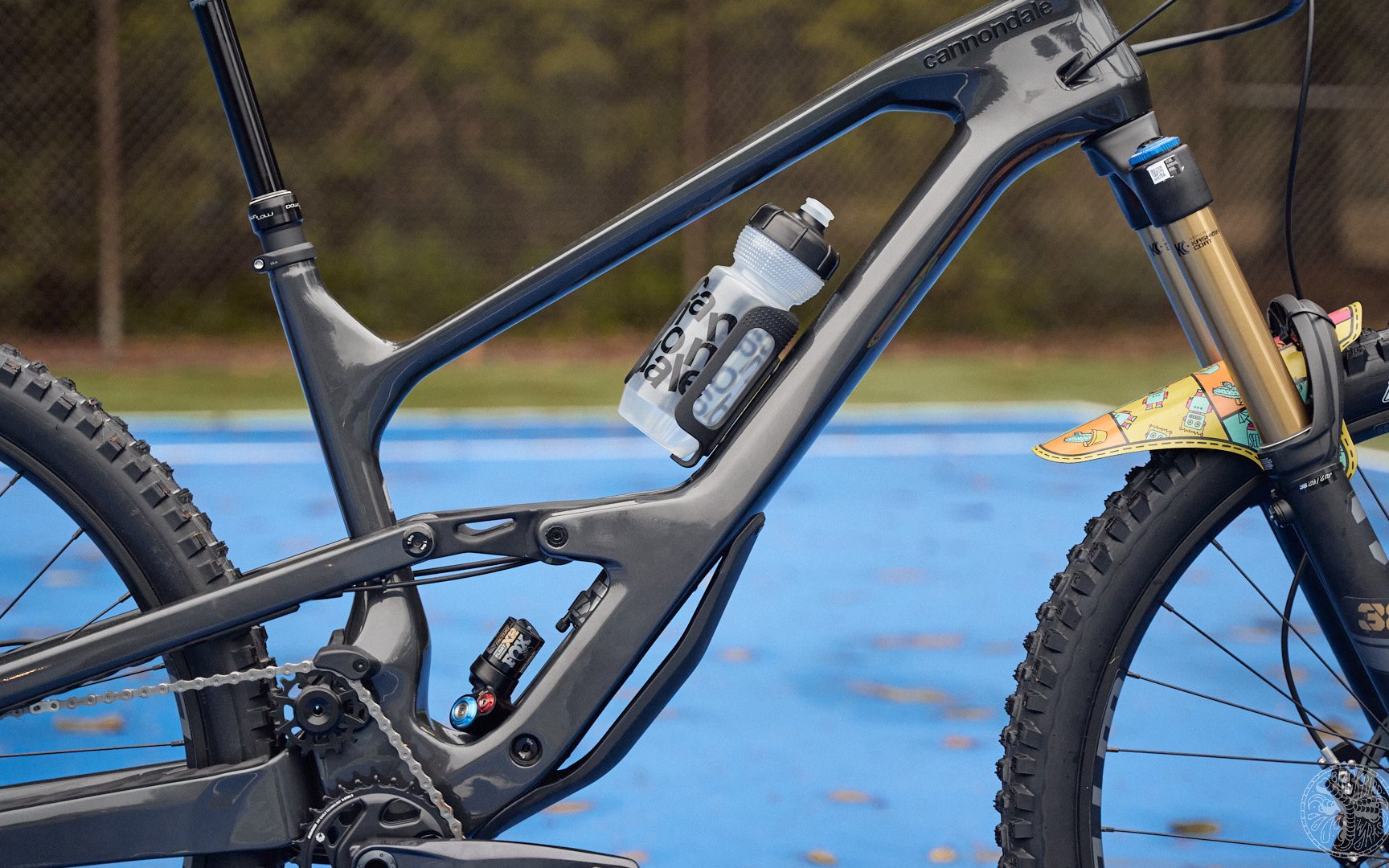
Review
2023 Cannondale Jekyll 1 First Impressions
Back in business! That’s how I felt when I heard I was getting a chance to test the new Cannondale Jekyll.
This design is an entirely new approach by Cannondale and is a commendable return to the high performance Enduro bike game. The reason I say I am back business is that the last few testers I have been on have all been mullets (Santa Cruz Bronson, Canyon Strive and Canyon Torque). Whilst everyone says Mullets are more agile and fun, I don’t agree that fun is fun. To me a bike that carries the maximum amount of speed down a rough and gnarly trail is the most fun. So I was really looking forward to getting back on a full 29er. This 29er is not messing about either. Lots of travel at 170mm front / 165mm rear, high pivot, very low slung weight and relatively long chain stays. Crumb-buckets it even comes with a a very DH 220mm front rotor and 165mm cranks.
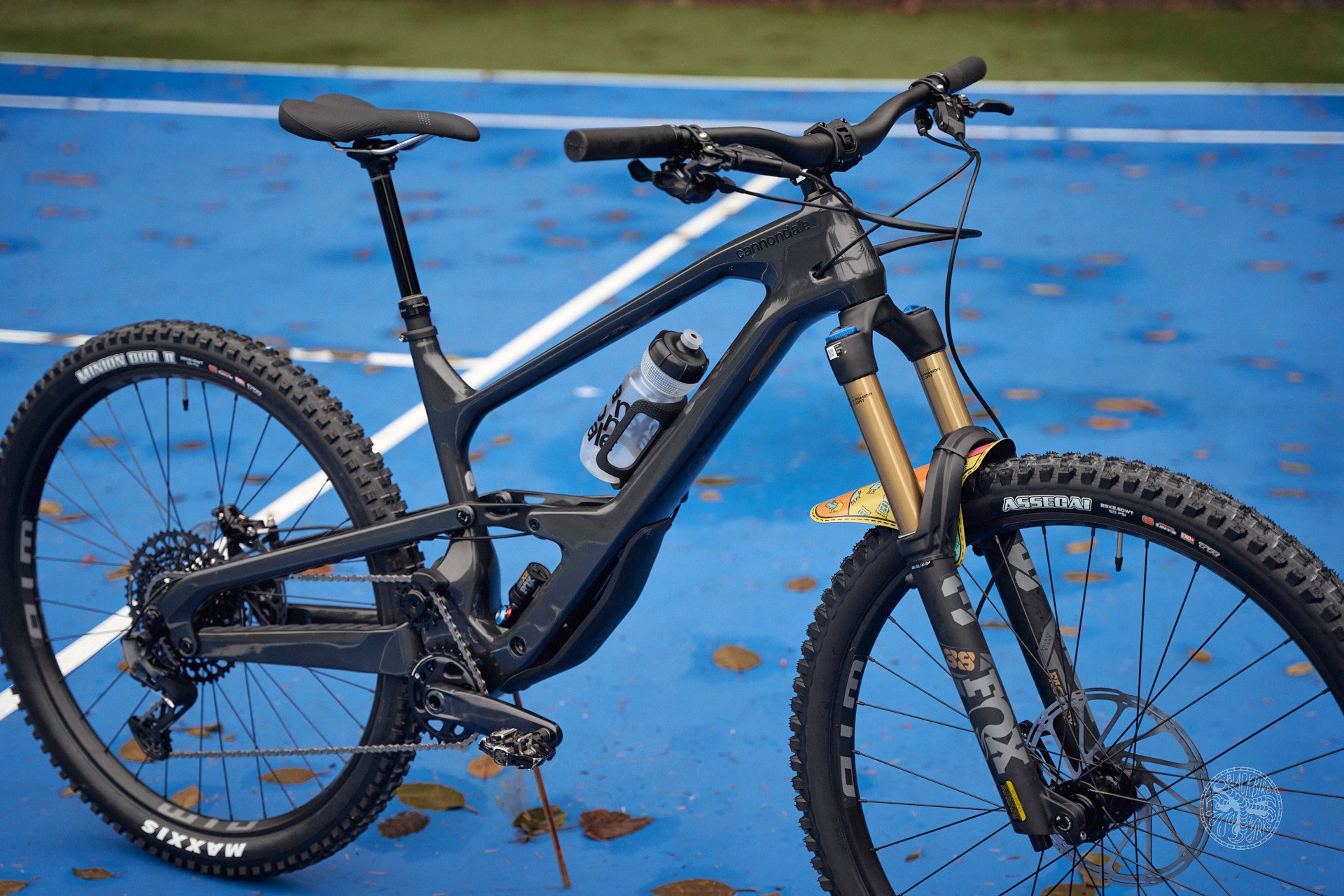
The new Jekyll really is ready to play ball
There are two models of the Jekyll. The lower priced Jekyll 2, and the Jekyll 1 which is being tested here. The cool paint colours on both are immediately noticeable. Both models come in a graphite colour but the Jekyll 2 comes in a striking Purple Haze while the second option for the 1 is a shimmering green. The green bike is so good looking that the news of my incoming test bike instantly created discord and envy amongst other NSMB testers, although the envious got the last laugh when my tester turned out to be the less glorious graphite colour.
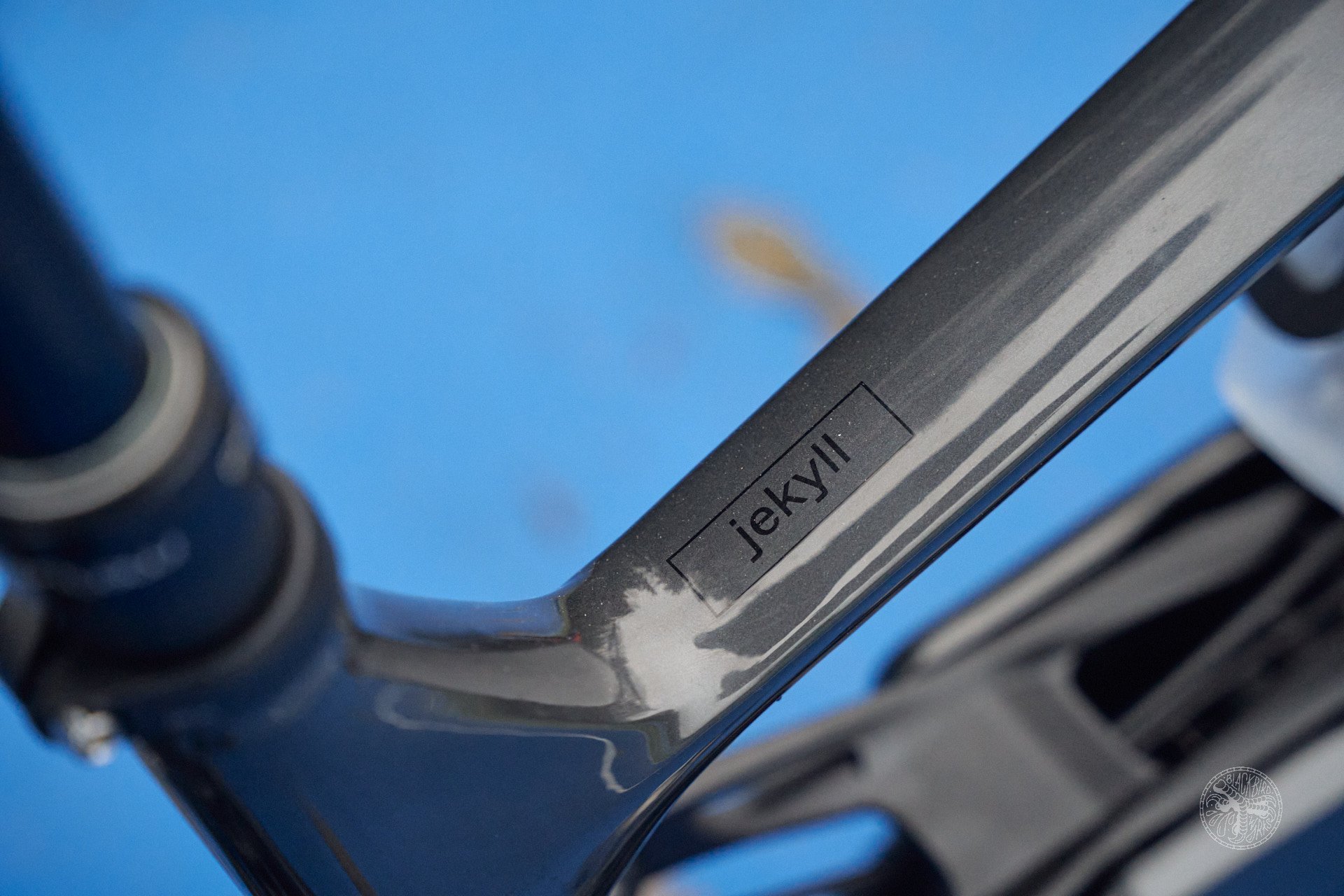
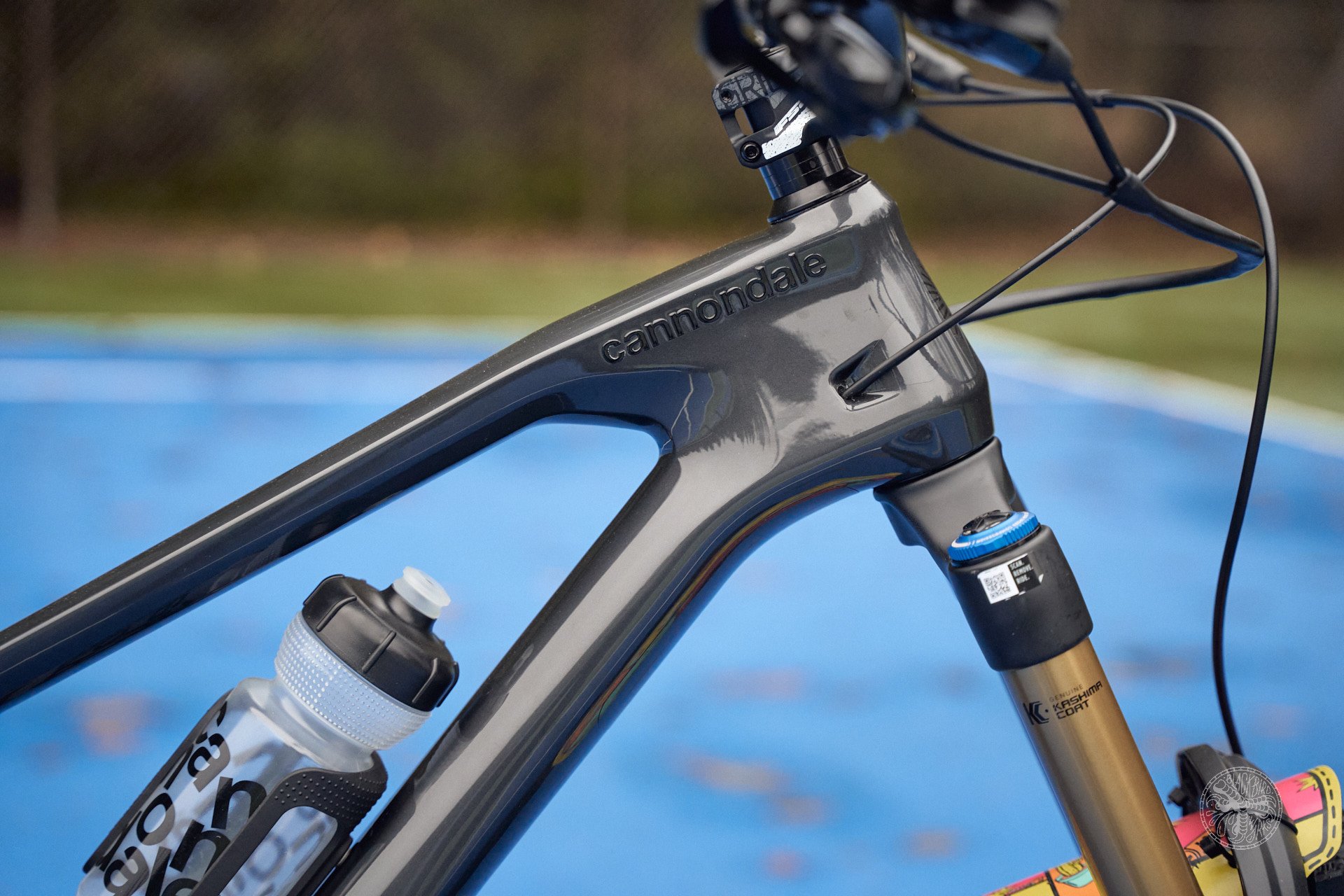
The finish looks very high quality
Component Overview
The Jekyll 1 comes with excellent Fox Factory level suspension; no cost-saving black stanchions here. Everything is full Kashima. Up front is a Factory 38 and the rear is a Factory Float X2. Brakes are also top of the line with SRAM Code RSC. The drivetrain is the very respectable SRAM GX Eagle which I was happy to see. My one concern is the wheels. Rims are WTB KOM i30 Trails which I have ridden before. These rims are too soft for a bike of this pedigree and in my experience do not live a long life. The seat post is a 170mm Cannondale-branded DownLow which we will talk about more later.
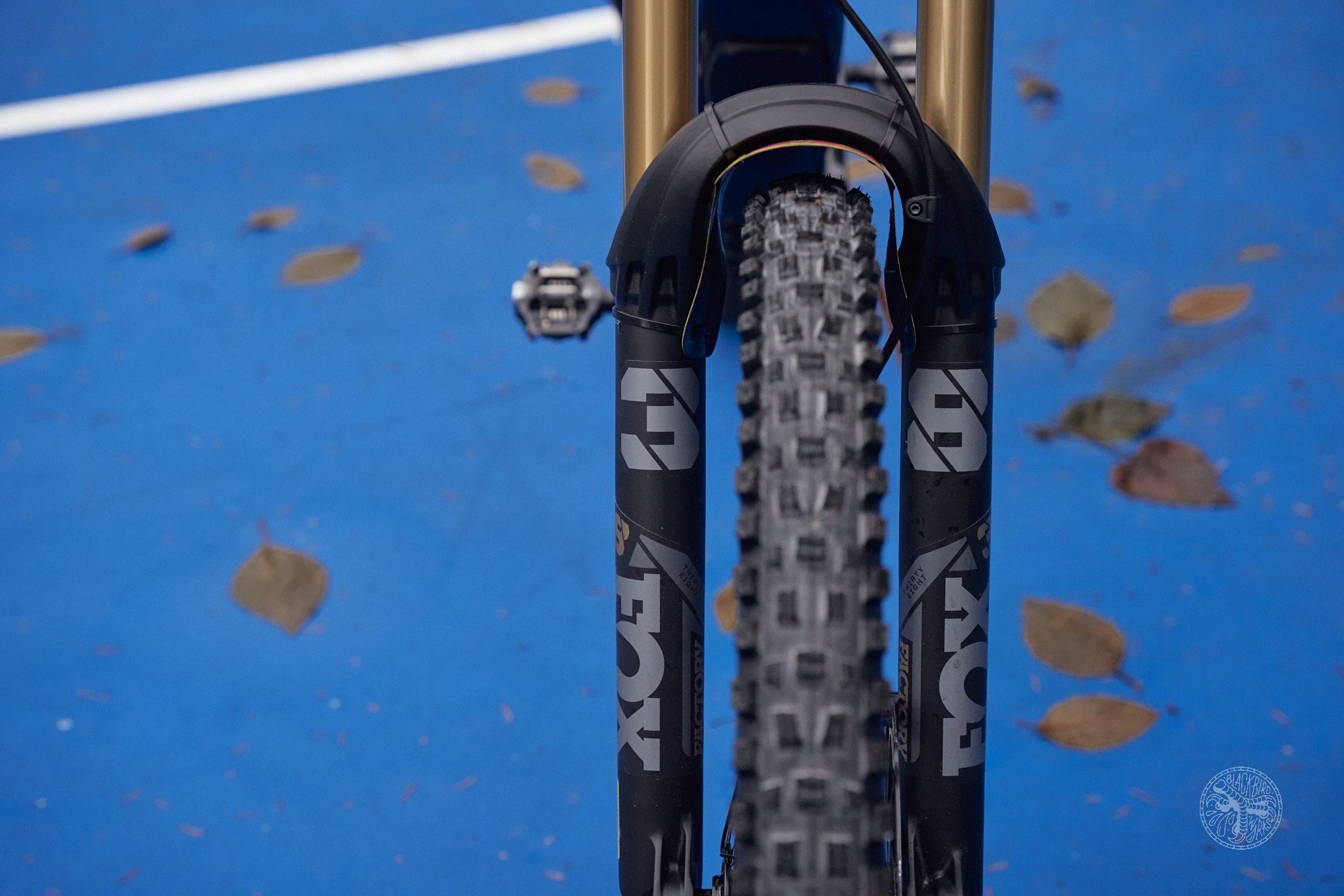
The big boy thirty-eight
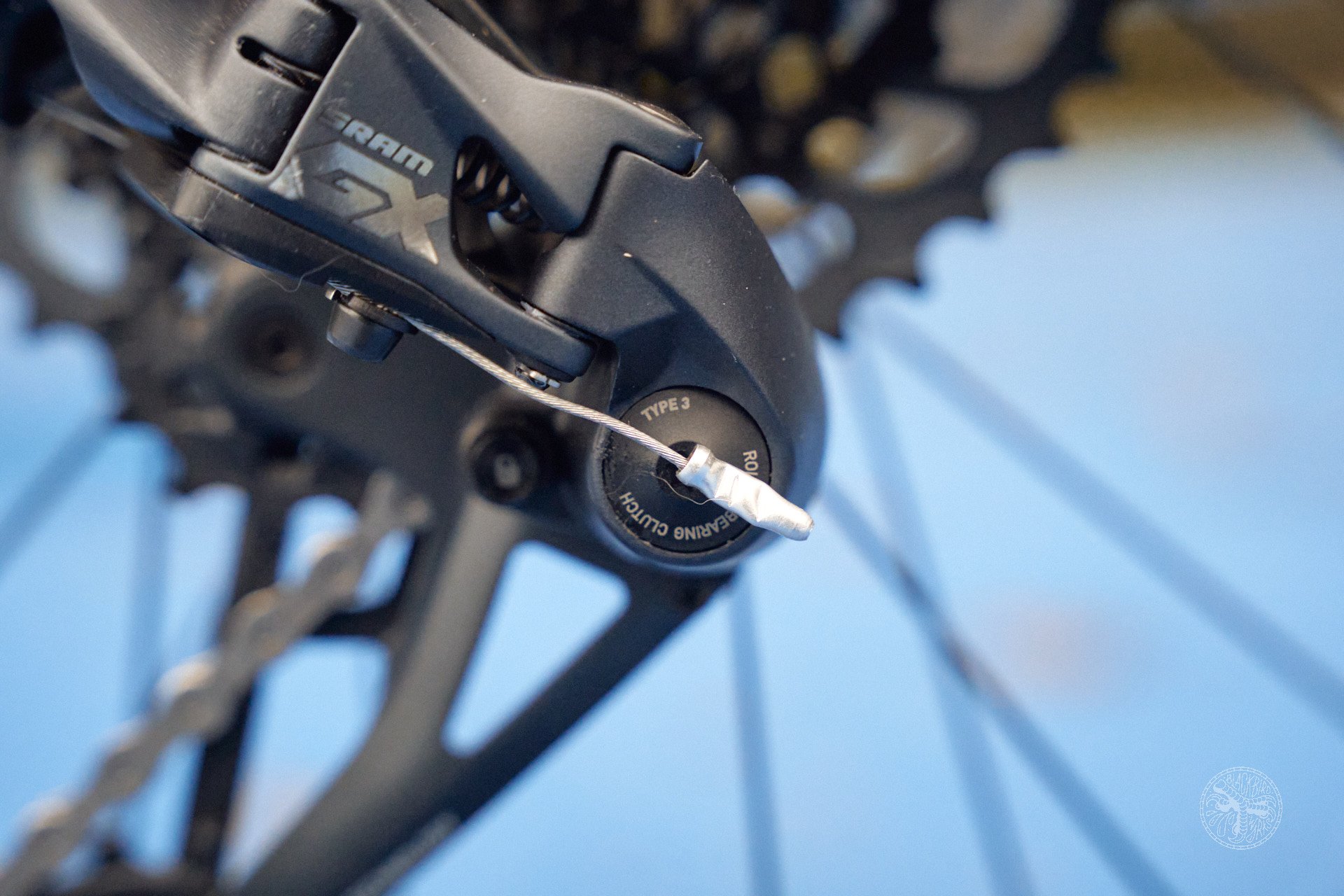
SRAM GX Derailleur is always a super solid spec
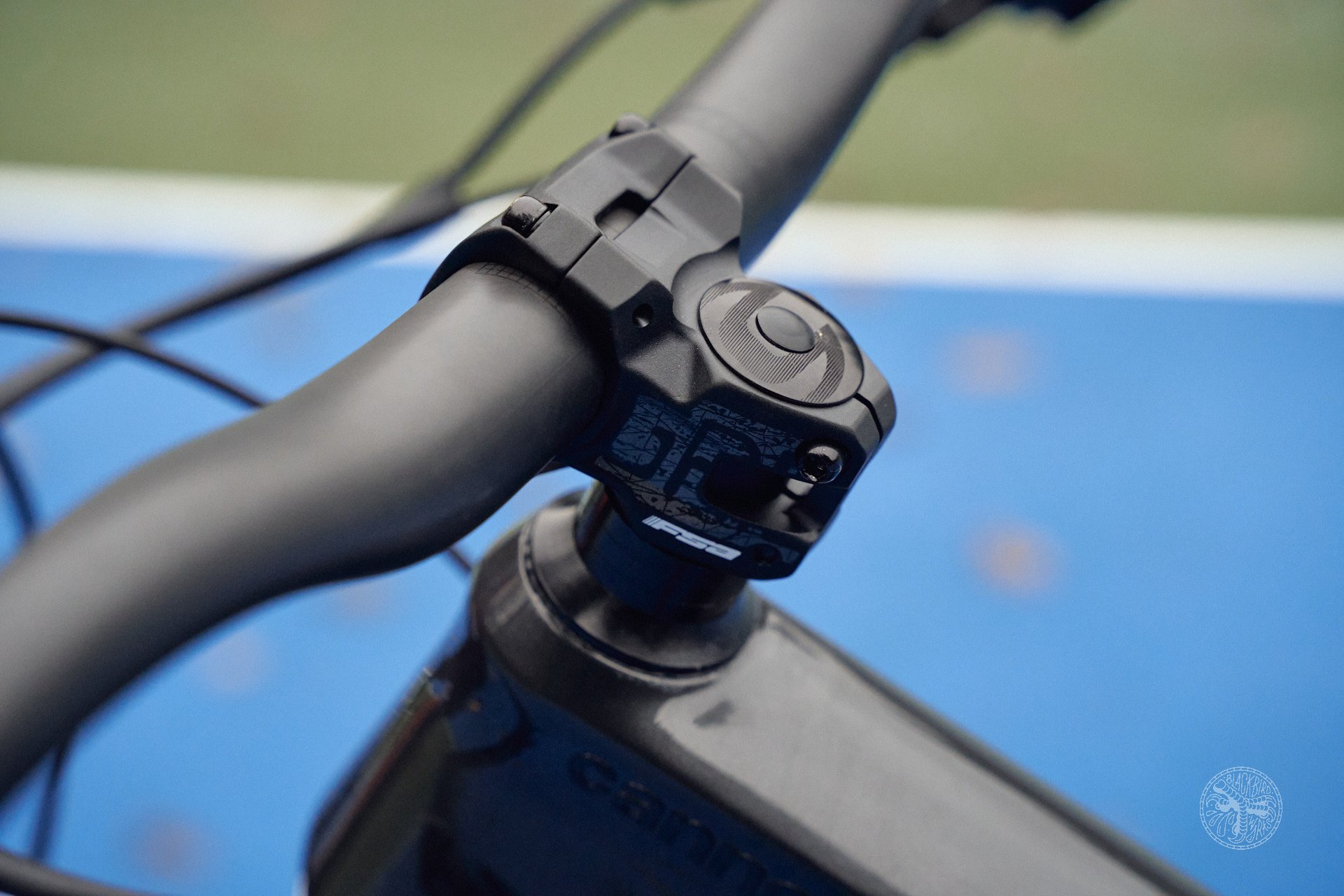
35mm stock stem
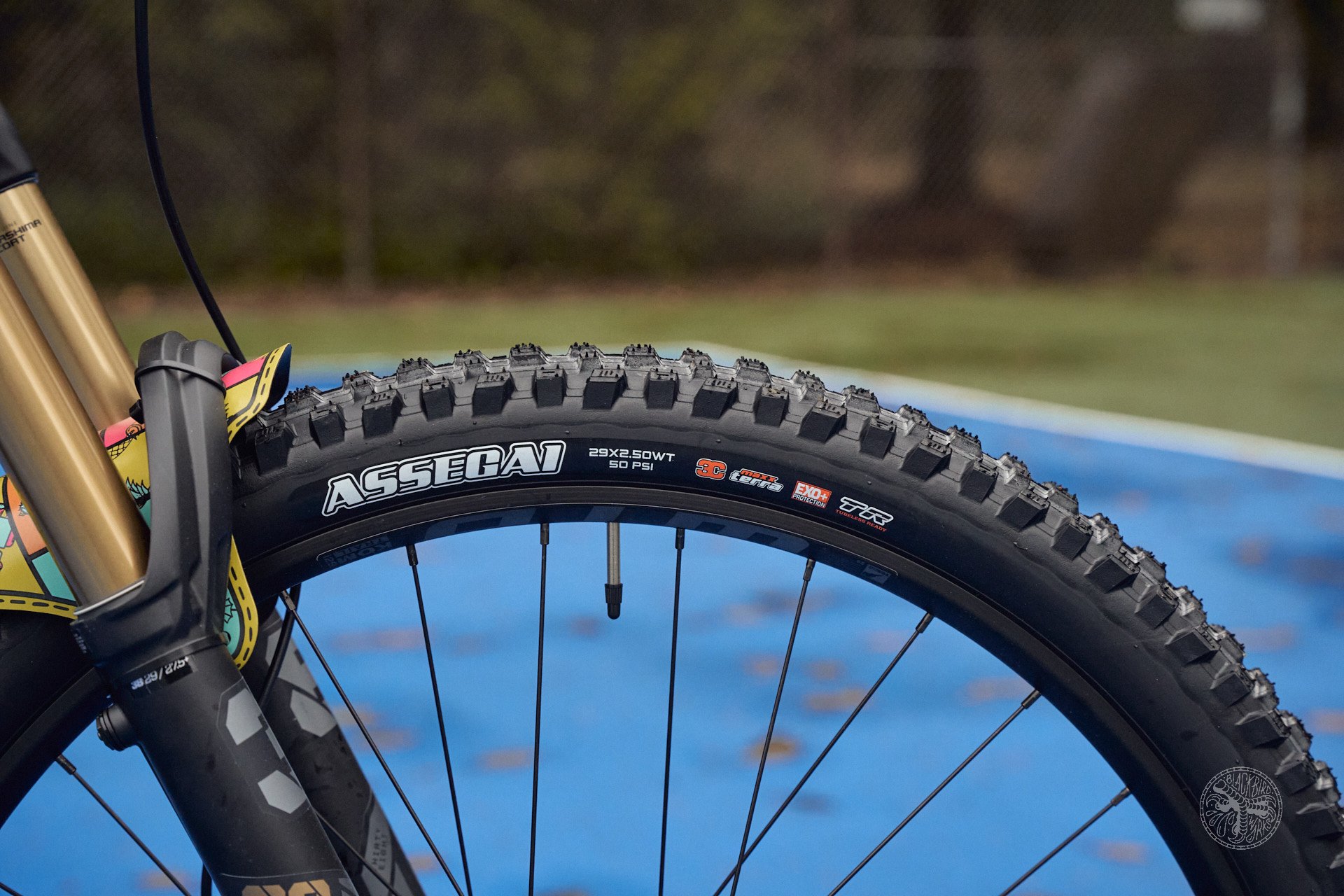
I swapped this out for the same tire in a MaxGrip compound.
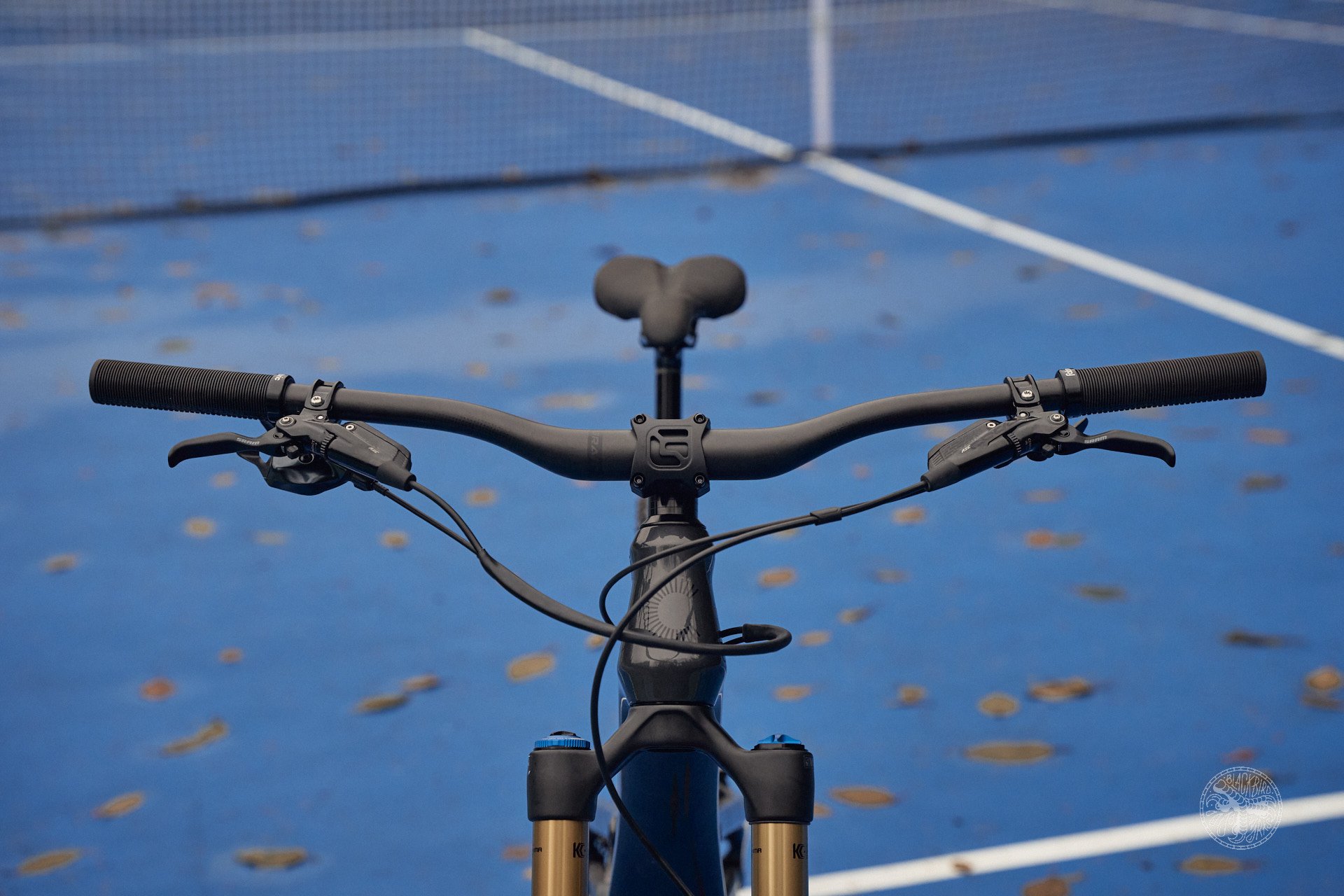
Jekyll 1 comes spec'd with a carbon handlebar
Frame and Suspension
The Jekyll definitely does not have any extreme geo measurements. The wheelbase (1264mm) and reach (475mm) are actually on the shorter side for a size large full Enduro bike. Head angle comes in at 64 deg which again is fairly conservative these days. Here is a quick snapshot to give you some reference.

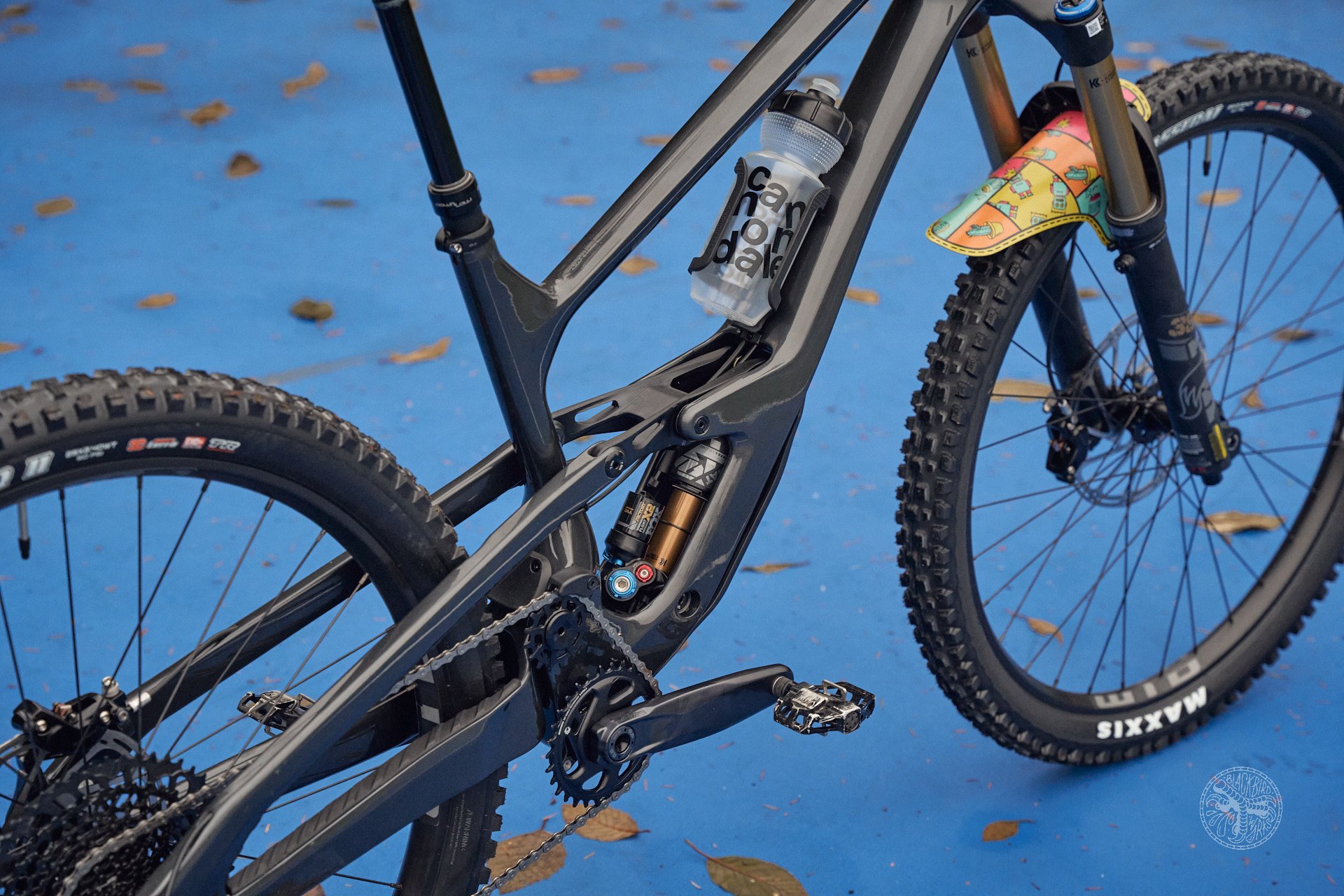
A good look at the Gravity Cavity
The suspension design is a Horst Link with a high pivot and idler pulley. The frame design element that really stands out is the rear shock being enshrouded in the Gravity Cavity. This is basically a large diameter split down tube with a bolt on cover to protect the shock. It will be very interesting to see how this design stands up to rocks and debris but there is no doubt it allows for a very clean looking design while lowering the centre of gravity. The build quality of the idler pulley, guide and pivots looks fantastic and again is very clean looking for an idler system.
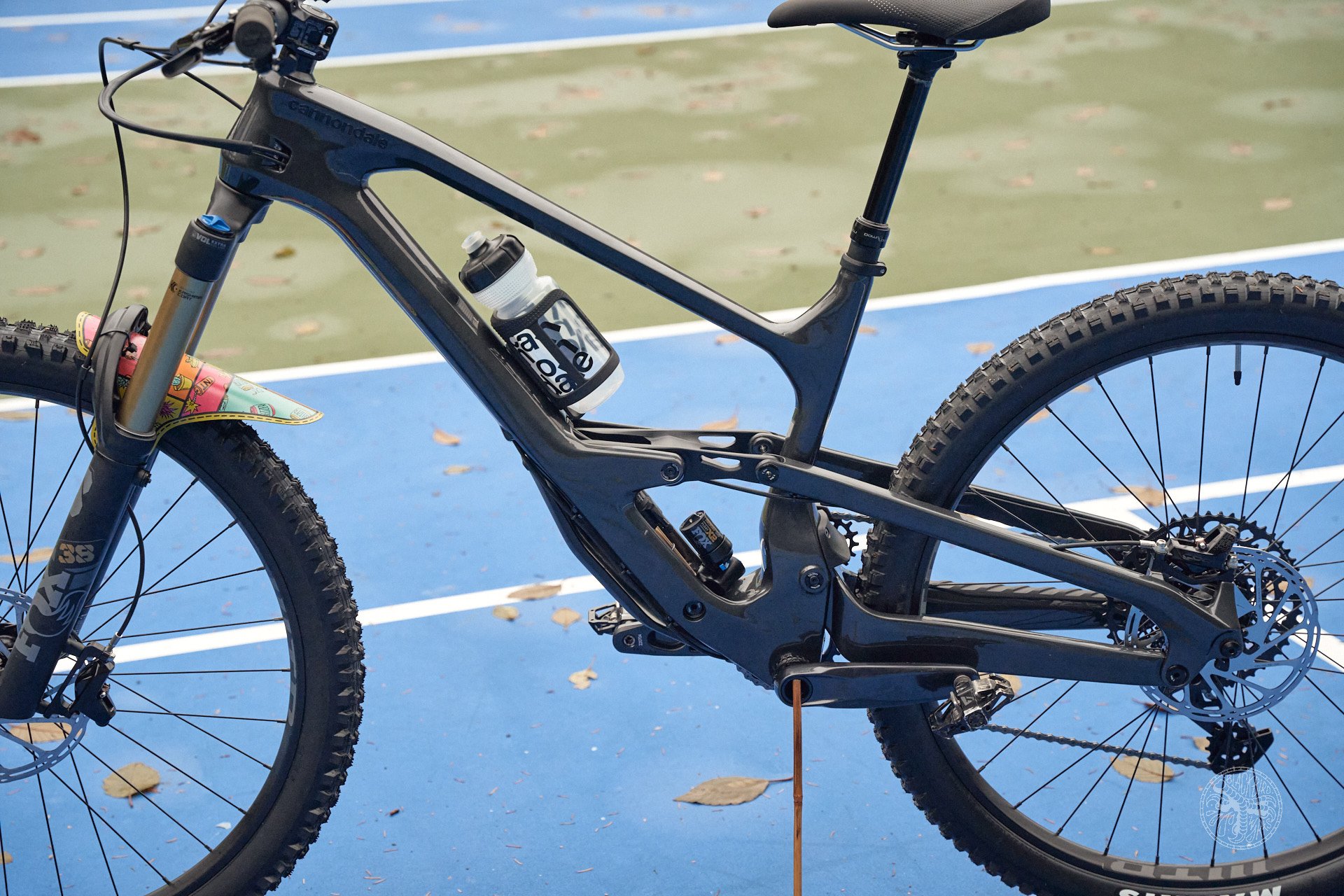
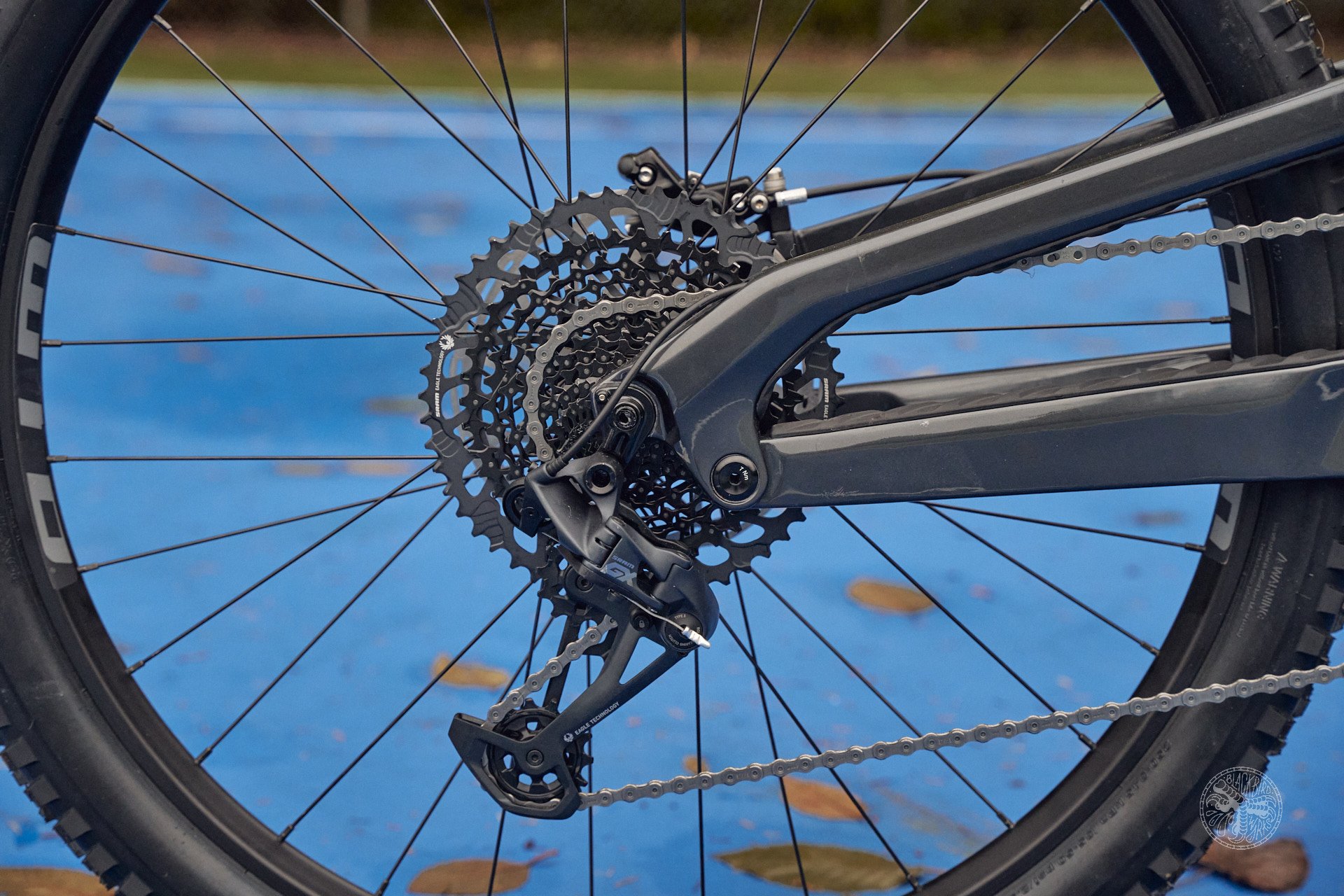
Set Up
The stock Cannondale carbon handlebar comes at 780mm so I left it uncut. I did change the 35mm stem out for a 40 as I have a longish upper body and wanted to add a little length to the 475mm reach. As it is winter time in North Vancouver, I swapped the front Maxxis Assegai from a MaxTerra to a MaxGrip compound. In the rear I left the the MaxTerra DHRII on but I put in a Tannus Tubeless insert to try and prolong the life of the WTB aluminum rim.
At 6 ft tall, I really don’t like 170mm seat posts. I started out with it however and it was as bad as I remember so I am now running a 210mm. Being able to get the seat further out of your way on descents really makes a huge difference to your riding.
For initial suspension pressures I set the front to 90 psi and the rear to 215 psi. For the other settings, I simply followed the recommended starting points on the Fox online set-up guide.
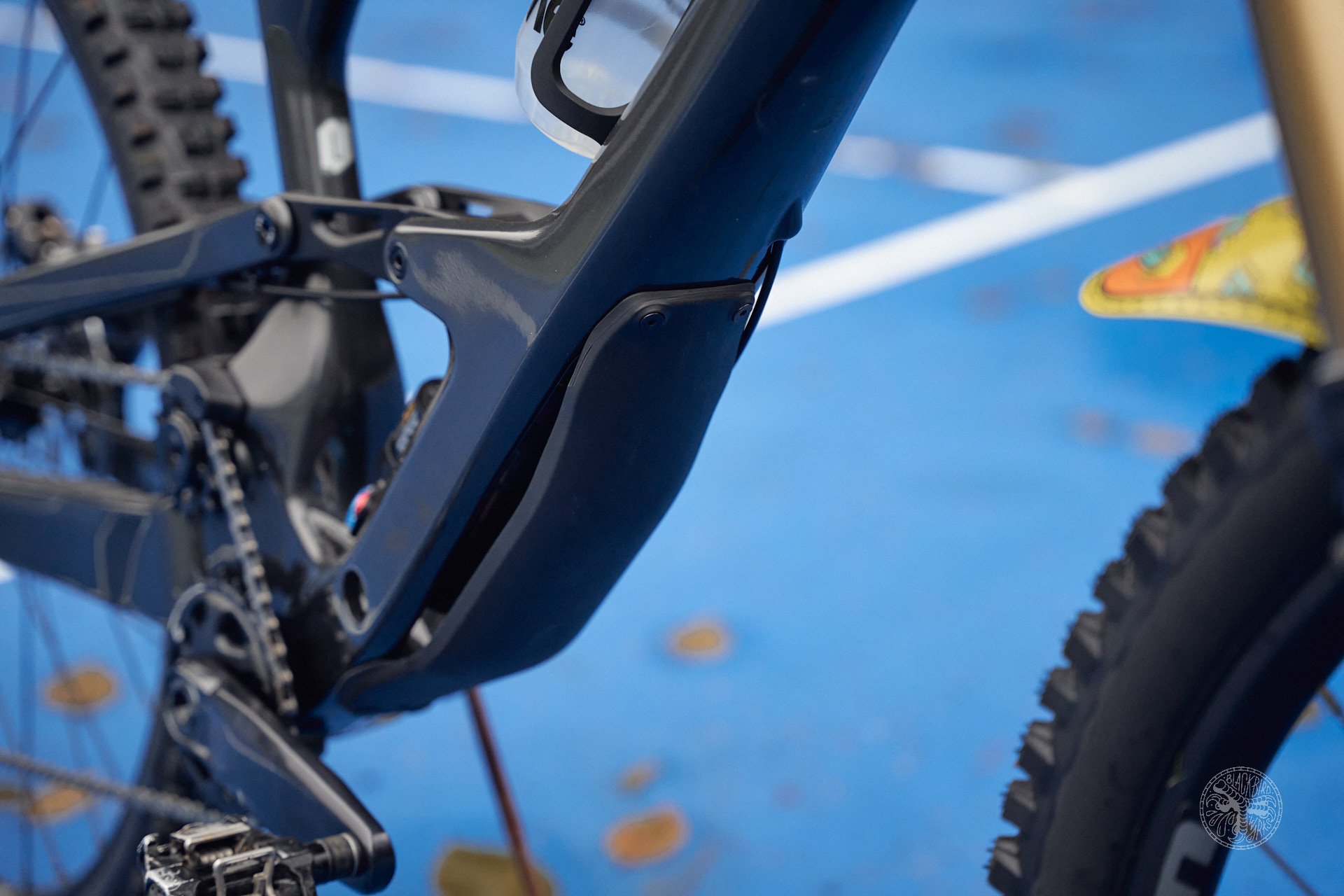
There is no shortage of bolt on guards.
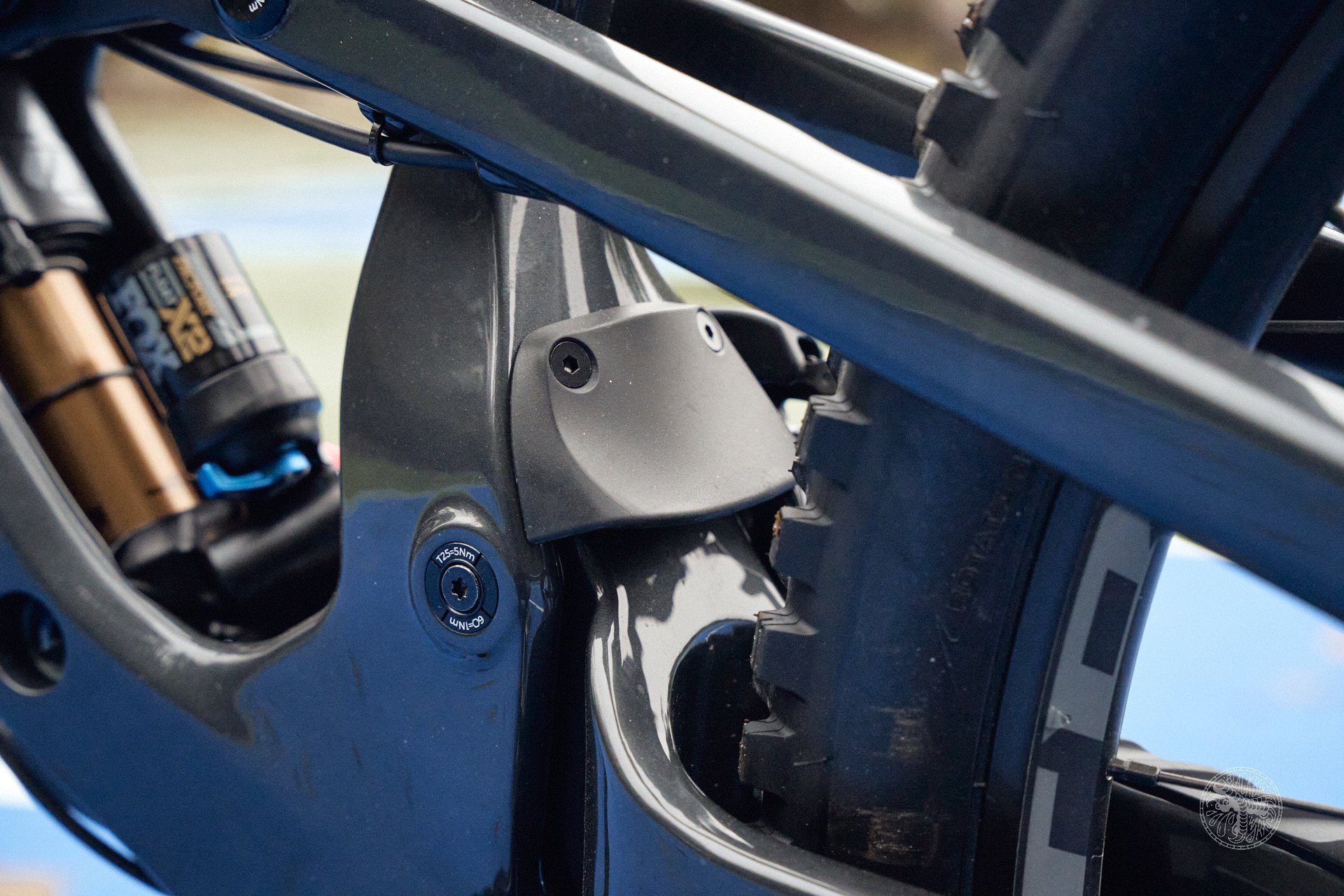
TIme will tell how they stand up.
The Jekyll was extremely comfortable to ride at speed right away. I was bragging to Cam and everyone that would listen that I must have become very good at setting up bikes but I really only think that is a small part of it. The combined Horst Link/high pivot rear suspension design combined with the excellent Grip 2 Factory fork up front makes for a very calm and settled ride. My first meaningfull observation was that traction in the corners felt really good and definitely contributed to some early riding confidence. Part of this could be having not been on a full 29er for a while but the suspension design would contribute as well.
Coming off a string of mullet trail bikes, I was also expecting to need to put more input into the start of my turns but I didn't really find that to be the case. This bike readily tips over into the corners.
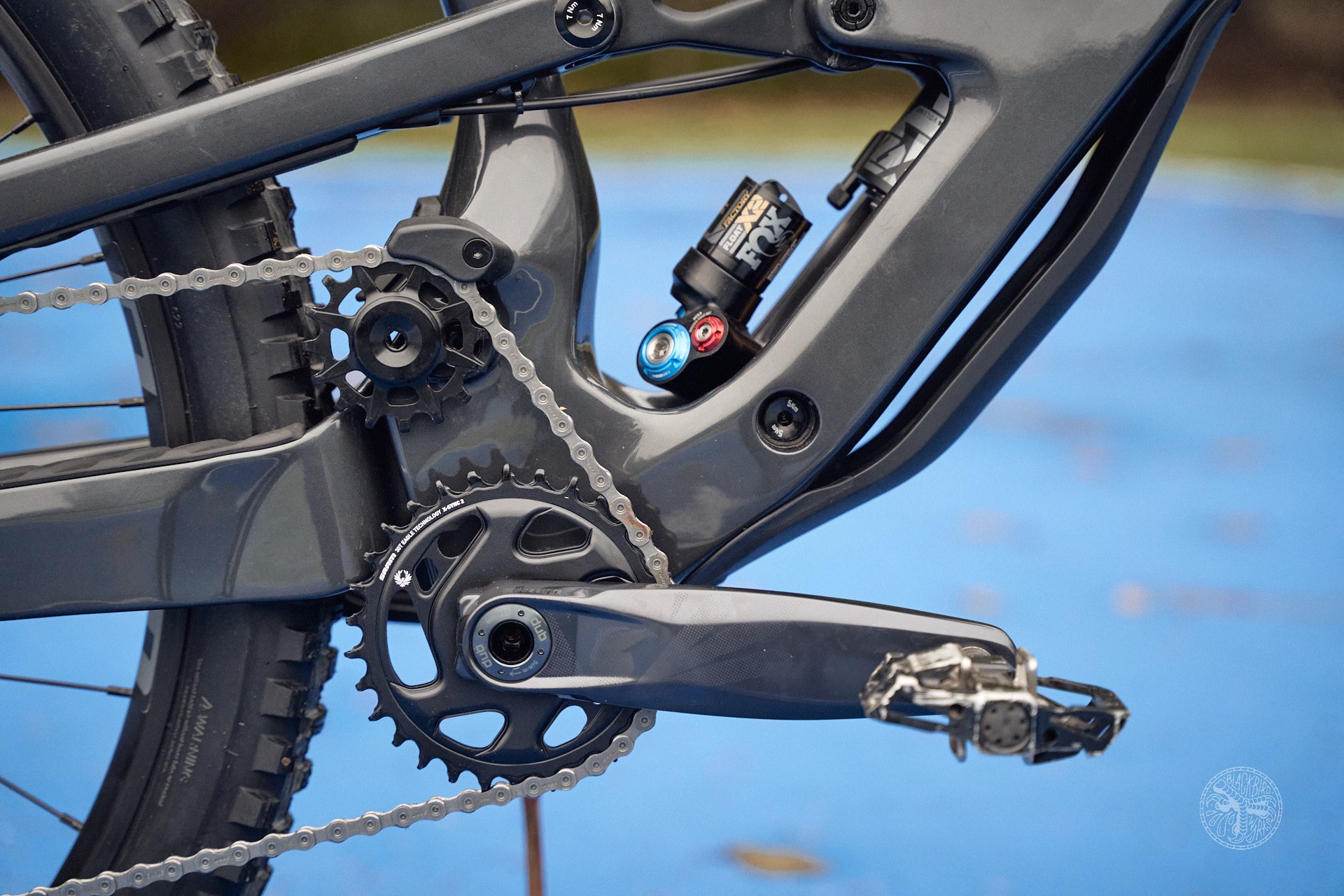
Another go fast bike with an idler wheel
I still have a ways to go on rear suspension set up. I started quite firm with just under 25% sag and I am slowly making changes as currently the shock is ramping up too quickly and I am not using all the travel. I will write about how this works out in the long term review.
The idler pulley and potential extra drag has not been noticeable on the climbs although to be fair it's been mostly cold and wet winter riding so far. I have had one ride where I definitely noticed some chain noise but the jury is still out on this topic thus far. I was a little worried the high pivot design would make the bike an unwieldy beast but that hasn’t been the case. High pivot bikes are known for their rearward axle path and wheelbase growth under compression. More riding will tell the tale but I expect the combination of high pivot and a moderate wheelbase makes a lot of sense for a bike that is meant to be pedaled instead of simply tossed downhill.
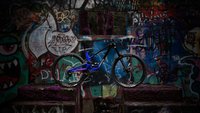
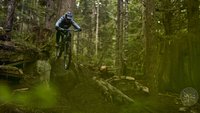
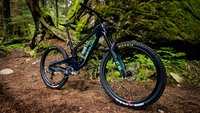
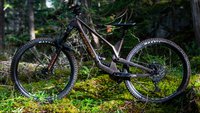







Comments
blaklabl
1 year, 2 months ago
That might be the best looking Cannondale I have ever seen. Wow.
Reply
Lu Kz
1 year, 2 months ago
Second only to the Raven.
Jokes aside, I think it's the best looking full suspension bike they've ever done. It's decidedly non-haggard looking in every way, which is a true departure from the norm set by 90% of their past full suspension bikes.
Reply
Kenny
1 year, 2 months ago
I can't get past the "ponch" that cover makes at the bottom of the downtube.
It would look sweet without that.
I assume it's necessary because the shock protrudes into that space when the suspension compresses.
Reply
Lu Kz
1 year, 2 months ago
I'm sure a lot of us would look better without the ponch.
Reply
Mike Wallace
1 year, 2 months ago
I have a bit of a hard time with it too. If it was mounted flush it would have beem much nicer.
Reply
RNAYEL
1 year, 2 months ago
Nice bike and all, but let's look back at that geo comparison chart. I am constantly amazed at how current the Specialized Enduro remains, going on 4 years after its release.
Reply
Jerry Willows
1 year, 2 months ago
it's a special bike.. can't wait for the 2024 model.
Reply
Mike Wallace
1 year, 2 months ago
Yes, that biked changed the game in my opinion. Since then it seems the engineering depts at many other bike companies have just referred to Enduro geo chart and successfully called it a day.
Reply
Mammal
1 year, 2 months ago
Had me at Crumb Buckets.
Reply
crgcrmny
1 year, 2 months ago
off topic but features in the article...
I'm seeing more and more Time Speciale pedals in the wider bike media, and I'm curious. What are you thoughts/likes/dislikes/advantages of and about them?
Reply
Deniz Merdano
1 year, 2 months ago
Those are my pedals I put on for the photos.
I love the 13 degree float and the smooth exit and entry feel to the time pedal system. They have taken the abuse I shell out, very well.
Cleats last a long time, not Shimano long but still very good.
Reply
ohio
1 year, 2 months ago
Not exactly what you're asking, but I'm on Time MX8s with the composite platform (and XC8s w/o platform on my gravel bike)... I don't quite get why I would want an aluminum platform or pins of the Speciale over the MX8 on a clipless pedal, but the MX8s have been stellar. The problem is, the function and performance is no more stellar than an XT trail (M8120) or XTR trail, and those are so much more available and the XTs are generally cheaper. The Time brass cleat is a little smoother than steel SPD cleats, but in retrospect I would take the SPD availability (being able to swap bikes with friends, bring just shoes rather than shoes + pedals when I travel and rent, finding spare cleats at the LBS) over that tiny, tiny advantage any day.
Reply
Curveball
1 year, 2 months ago
I have the MX8's on my enduro bike and love them. I have the Speciale 8's on my hardtail. It feels like it's easier to get my foot into the MX8's on sketchy descents. I had retention issues with SPDs. They popped out at bad times for me. No issues with the Times.
Reply
Dogl0rd
1 year, 2 months ago
Geo looks spot on, want!
Reply
dano91
1 year, 2 months ago
I’ve owned this bike since June and have been really loving it. I swapped to a coil, a better wheelset and longer dropper immediately. Overall it just feels like an extremely well balanced bike that doesn't share some of the quirks of other high pivots. Glad you are enjoying it as much as I have and am looking forward to the long term review.
Reply
fartymarty
1 year, 2 months ago
Mike - any chance of getting a close up piccy of the top link that drives the shock?
Reply
Mike Wallace
1 year, 2 months ago
Yes, I need to completely deflate the shock to check something else so I will take some pics then.
Reply
fartymarty
1 year, 2 months ago
Thanks.
m
Reply
Deniz Merdano
1 year, 2 months ago
Hey mike, I just helped Colby set his up the other day and we landed on body weight for bang on 30% sag. The shock cover needs to come off for proper measurement
Reply
Mike Wallace
1 year, 2 months ago
Veddy interesting. Curious to see if he ends up running that much sag long term....
Reply
Deniz Merdano
1 year, 2 months ago
I don't see why he wouldn't.
Reply
Mike Wallace
1 year, 2 months ago
I dont know about Colby of course but i would say many/most racers run less sag in the search of speed. More efficient pedaling, ride higher in travel, more trail feel (comfort is not important), better on the accidental huge hits/g-outs, more travel to work with, less pedal strikes...
Reply
Tim Coleman
1 year, 2 months ago
I think that's more of a thing in Downhill than in Enduro, but course dependent. For a rough EWS type event a harsh / stiff bike will beat you up more than the time you'll save. I remember reading / hearing somewhere that Jared Graves and a few others would run surprisingly soft setups for rough enduros.
Reply
AndrewL
1 year, 2 months ago
Exactly this. I often read of testers running shock and fork pressures 50% higher than my own and think that I'm obviously doing it wrong. Then I read earlier today on PB about the YT enduro boys set ups and thought again. Kasper Woolley (172cms and 65kgs) 50psi and 150psi, Jack Moir (186cms and 83kgs) 75psi and 177psi.
Glenn Bergevin
1 year, 2 months ago
It's got geo on the trailish/all rounder side of enduro, but big travel and the idler/high pivot combo that seems to fall flat on.. flatter rides. Interesting combo...
Reply
Moritz Haager
1 year, 2 months ago
What's the advantage of combining a horst link with a high pivot? Is it mainly just less squatting during braking?
Reply
JT
1 year, 2 months ago
You'll get less squat certainly, but it also changes the ratio of X & Y displacement during travel, especially at end stroke, at least that's what I noticed when dorking around with variants on linkage. Like pretty much all Horst links, it flattens that curve profile, so you get a bit of the high pivot goodness with horizontal travel but not too much that it saps overall vertical travel. I suspect it makes life easier on the shock and wheel as when the rear is returning it won't be as abrupt of a direction change when it encounters the next impact. I've read folks say that single high pivots are pretty noisy on rapid, heavy impacts due to the wheel moving forward more and faster as the rear returns. Basically, the swingarm is wound up and swinging for the fences when it takes the next hit. No personal experience here, just what I've gleaned from various reviews and a few different curves from software looked like. If I'm off base, I will happily eat my crow.
Reply
ohio
1 year, 2 months ago
Yes, control over the anti-rise (braking) is the big advantage. There's also a small ability to move the virtual center (effective pivot point) to a different spot than the actual main pivot, which can be helpful for packaging everything you want at the bottom bracket area. But the chainstay pivot on a Horst link is so close the the rear axle that the difference between a Horst 4-bar and an equivalent single pivot located at it's virtual center is nearly zero when looking at axle path and chain growth.
Reply
Peter Appleton
1 year, 2 months ago
there hasn't been a Jekyll since the Gracia days that i'd put a leg over , but this is one sick machine! congrats
Reply
Please log in to leave a comment.